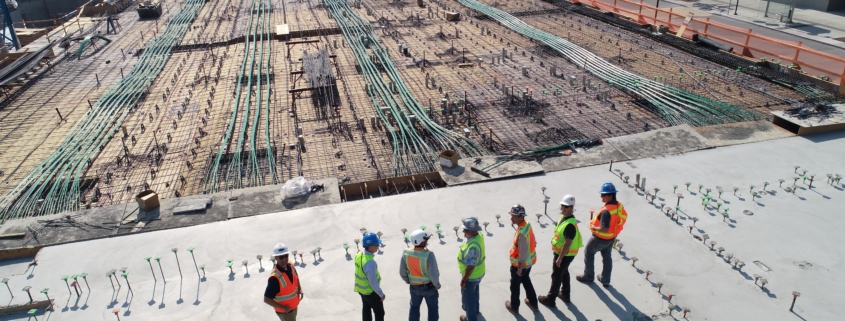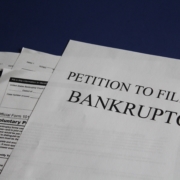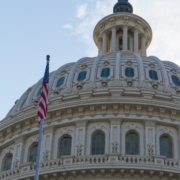Back to the Futile: California Court of Appeal Expands Breadth of “Futility Exception” to Prerequisites to Mandamus Claims in Land Use Cases
A recent land use decision of the California Court of Appeal has eased one of the many burdens experienced by developers seeking to challenge a public entity’s permit denial. In an opinion by Judge Tangeman, the Second Appellate District reinforced the strength of the “futility exception” to the legal prerequisites in mandamus actions.
In Felkay v. City of Santa Barbara, 62 Cal. App. 5th 30 (2021), the Court of Appeal analyzed the futility exception and found it applicable under the circumstances to the judicial doctrines of ripeness and administrative exhaustion. The futility exception, generally speaking, is a doctrine that provides that where a decisionmaker has indicated that its mind is made up against the petitioner’s desired course of action, the normal procedural bars, such as administrative exhaustion, do not apply as they otherwise would.
In Felkay, petitioner and plaintiff Thomas Felkay purchased an oceanfront lot in the City of Santa Barbara (the “City”) located on top of a seaside bluff. Felkay wanted to develop a luxurious home on the property and applied for the relevant permits to the City’s planning commission (the “Commission”). Upon review by the Commission, it concluded that the proposed development was impermissible. Namely, because the bluff top’s elevation was deemed to be at 127 feet, the coastal restriction prohibited development at any elevation below that level (i.e. closer to the ocean), and the proposed development would take place below 127 feet, the project could not proceed as proposed. Moreover, the Commission also found that an alternative building site further uphill from the bluff top was untenable for geological reasons. Id. at 34-35.
Felkay then appealed the Commission’s decision to the City Council, while also arguing that the Commission’s decision amounted to a taking. The City upheld the Commission’s decision and found that there were other alternative uses to the property such that the Commission’s decision was not a taking. Id. at 35. Felkay filed a petition for administrative mandamus and complaint for inverse condemnation claims against the City. Id. at 36.
The court split the proceedings in two, starting with the writ proceeding and ending with the trial on the inverse condemnation claims. The court denied the writ, holding that the City’s decision was supported by substantial evidence and that Felkay had not introduced sufficient evidence to justify the City’s application of Public Resources Code section 30010, which authorizes development that would violate a coastal development restriction to avoid unconstitutional takings. As for the trial on the inverse condemnation claims, the court found that there had been a taking and awarded and the jury awarded Felkay $2.4 million in damages for the fair market value of the developed lot, along with a substantial attorney and expert fees. Id. at 36-38.
On appeal, the City challenged the trial court’s ruling on the inverse condemnation claims on three bases: (1) Felkay’s claim was not ripe; (2) Felkay had not exhausted his administrative remedies; and (3) Felkay waived his right to argue the section 30010 claims at trial because he did not raise them during the writ proceeding.
As for items 1 and 2 above, the court held that the futility exception applied to both. The City argued that, at a bare minimum, Felkay was obligated to submit an amended application for development before suing the City. However, according to the court, because the City had “made plain” that there was no way they would approve any development as envisioned because anything below or above the bluff top was unbuildable, Felkay was not obligated to submit an amended application. Id. at 40. As for the judicial exhaustion argument, the court held that because the parties had stipulated to try certain issues in the writ proceeding and reserve other issues for the inverse condemnation trial, the City’s argument failed. Indeed, the parties had agreed to reserve the section 30010 claim for the inverse condemnation trial, and any “failure” to raise that issue during the writ proceedings was by design. Id. at 41-43.
In short, the Felkay decision provides another example of when the futility expression excuses a project developer from having to go back to the drawing board before suing a public entity that denies development permit. That is, if there is “NO POINT [sic] in going back” to the decisionmaker with an amended application because it has “‘made plain’ it [will] not allow any development” on the relevant parcel, the prospective plaintiff’s claim is ripe and the exhaustion requirement is met.
Although the “futility exception” issue was the court’s focus in Felkay, perhaps the more interesting takeaway from it is that the trial court found—and the City apparently did not object to the finding—that Felkay had been deprived of “all economic use of the property” resulting in a “de facto taking,” even though the court acknowledged that the land was still usable for “recreation, parking, [and] views.” Id. at 35, 38. This suggests that “de minimis” economic uses of property do not negate a takings claim.
Similarly, another potential takeaway is that this underscores the lack of a due diligence component in inverse condemnation claims. The origin of the issue here is that Felkay originally thought the bluff top was at 51 feet, which opened up a greater area of his lot for development. Id. at 34. As it turns out, he was mistaken, and the City’s determination of the true bluff top elevation torpedoed his entire plan—although he ended up compensated handsomely for his trouble. This suggests that inverse condemnation claims do not take into account whether or not the plaintiff was mistaken, nor whether plaintiff could have reasonably discovered that mistake had he gotten a second opinion from a different surveyor prior to applying for his permit. Perhaps because of the constitutional nature of inverse condemnation claims, courts have never applied a judicial gloss to inverse condemnation claims to cut off rights to plaintiffs who could have discovered their lots were unbuildable prior to purchase.
At bottom, Felkay shows the risks for municipalities in uncompromising applications of their regulations to developers, and also shows the relatively deferential treatment inverse condemnation plaintiffs receive from courts with regard to the exhaustion requirement. Although any administrative law-flavored claim has hoops to jump through, Felkay has clarified the “futile” scenario where there is one less hoop.











